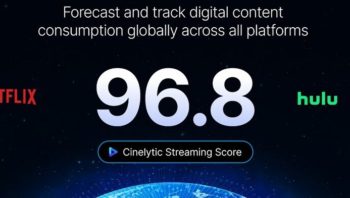It’s Not Technical, It’s Cultural: The Journey to a Data-Driven Culture
Competition in the entertainment landscape has rapidly amplified leading some studios and independent content companies to face an existential moment. But with the emergence of new tools, technologies, and data sources, there is now a chance to hold the key to success. This advancement of accessible resources is the fuel to a data-driven culture that has the potential to be the genesis of innovation by offering insights into understanding the entertainment sector’s audiences on a micro-level.
Being data-driven does not mean that data is meant to be blindly followed or challenge existing decisions, but rather stimulate an informed intuition. A data-driven culture creates an environment where your creative instinct is strengthened from the support of information-driven decision making and fact-based innovation. Data can be thought of as a roadmap to efficiently identifying your content-customer fit to meet real-time consumer demands. Companies that choose not to adopt a data-driven culture are failing to realize their full potential in transforming into industry leaders with an optimized content pipeline.
But, why is it so hard to adopt a data-driven culture for some?
The greatest hurdle is not technical, but rather cultural.
Here are 5 steps to jumpstart the journey of creating a data-driven culture:
1. SEEK OUT A CATALYST LEADER
Culture change is a key role of catalyst leadership. Catalyst leaders are forward thinkers, that can ignite action and change. Creating a data-driven culture is a gradual process that requires commitment from employees company-wide, which calls for an internal catalyst leader who can help sponsor the change so others may follow. The goal for the catalyst leader should be to create a cultural framework of adopting a new mindset and behaviors to advance the company’s data maturity to enhance the consumer experience overall.
2. SET A DATA GOAL
Data is an asset that can show relevant trends, predictions, and projections. Ask yourself, “What is the data goal of the project?” It is imperative to clearly outline your data goal to help keep you strategically guided and productive or else the data will prove to be ineffective. Having a clear understanding of your purpose is the beginning of opening up a new world that enables you to connect with consumers in new and innovative ways.
3. USE THE RIGHT TOOLS, TECHNOLOGIES, AND DATA SOURCES
There are a plethora of available tools, technologies, and data sources that can be used to help reach your data goal. Research and discover what accessible resources are right for you. The accessible resource you select should help you achieve your data goal whilst being a tool for strengthening and building more engaged relationships with your audience. For example, at Cinelytic we offer multiple data sources and analytic/decision-support tools, including a proprietary, global, P2P based file-sharing data set of film and TV content.

This data set contains 150 million P2P transactions per day and is a strong proxy for digital OTT consumption across all platforms. We correlate our P2P data with consumer demographics data to provide deep audience insights to help our clients better understand, target, and activate their audience.
4. INCREASE DATA LITERACY
Data is useless if your team is unable to successfully access, analyze, and interpret applicable insights.Empower your team with training, courses, and visualizations of the data. From a creative standpoint visualizing the data may be a valuable asset for your team to see, digest, and understand how to use the data to inform their decisions. It may also help to humanize the data. Data is not intangible, it is from real, breathing individuals who have acted in a particular way that produced detailed, actionable insights into consumer demands.
5. INCLUDE DATA INSIGHTS INTO THE DECISION-MAKING PROCESS
An insight that drives action can be very valuable and advantageous to a company, but not every company has taken a path to ensure that decision-making appropriately reflects data insights. To effectively utilize actionable insights, create decision-making processes that integrate your data-driven objectives with creative instincts. When you start to request that all decisions be supported by data you are choosing to follow a path towards less risk and greater success.
Be willing to do things differently. Companies that leverage a data-driven culture by using an informed intuition have the opportunity to create creative and smart strategies to scale and evolve. So, if you are looking to gain a competitive edge, the next time you have to make a decision about your content, base it on your creative instincts supported by data insights.



